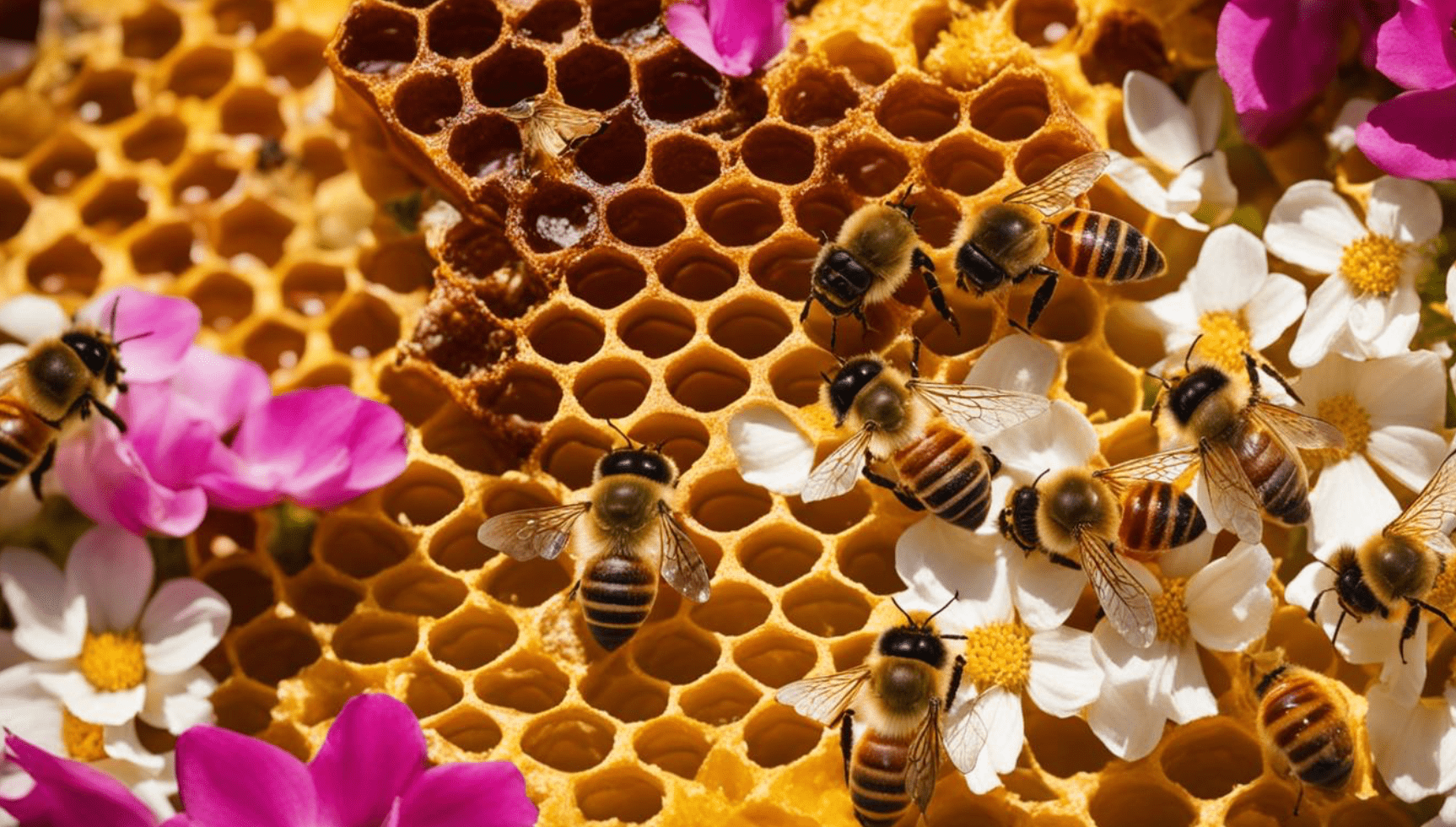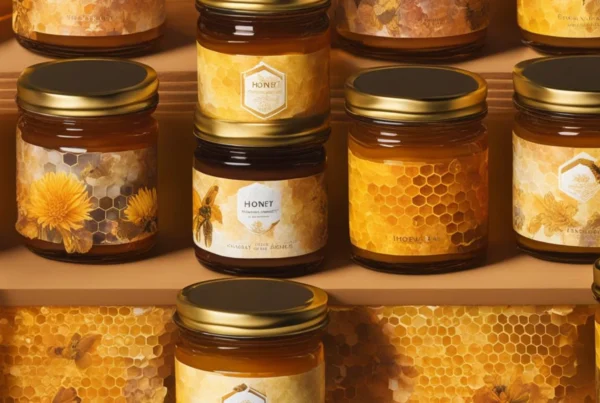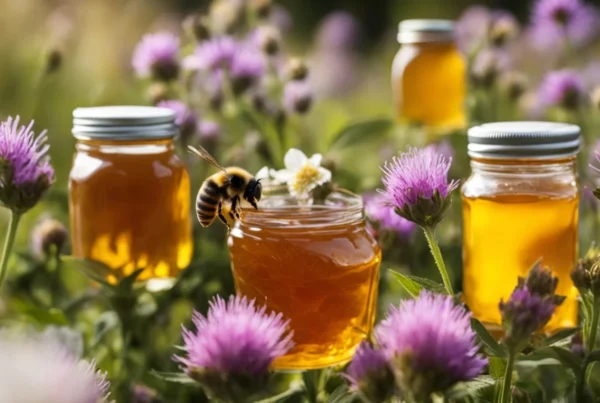If you’re looking to expand your knowledge of beekeeping, you’ve come to the right place. In this article, we’ll explore the captivating world of honey frames and how they can revolutionize your beekeeping practices.
Whether you’re an experienced beekeeper or just starting, honey frames can enhance your honey production and simplify your harvesting process. They play a crucial role in maintaining the structural integrity of beehives and promoting the health of your bees.
In this section, we’ll introduce you to honey frames and their importance in beekeeping, exploring their various types and features. We’ll also take a closer look at the fascinating honeycomb structure and how honey frames contribute to its formation. Finally, we’ll delve into the benefits of using honey frames in beekeeping and sustainable beekeeping practices.
Key Takeaways:
- Honey frames are a crucial tool for modern beekeeping.
- They enhance honey production and simplify the harvesting process.
- Honey frames promote the health of your bees and the overall sustainability of your beekeeping operation.
- There are various types of honey frames available, each with unique features to suit different beekeeping needs.
- Proper maintenance and care are crucial for the longevity of honey frames and the health of your beehives.
Understanding Honey Frames and Their Importance in Beekeeping
Beekeeping is an age-old practice that has been around for thousands of years. It involves the management of bees in an artificial hive to promote honey production. Honey frames are an integral part of this process, serving as the foundation for honeycomb formation and supporting the structural integrity of the beehive.
Apiary equipment, such as honey frames, allows beekeepers to extract honey with ease while promoting the overall health of the hive. Honey frames are essential for beekeeping practices as they provide a designated space for bees to produce honey, which can be easily extracted by beekeepers.
The Importance of Honey Frames in Beekeeping
Bees are natural builders and will create honeycomb in any space they deem suitable. However, without honey frames, it can be challenging for beekeepers to manage the beehive and extract honey. Honey frames provide a designated area for bees to produce honey, making it easier for beekeepers to monitor and extract honey with minimal disruption to the bees.
Furthermore, honey frames promote the structural integrity of the hive, preventing the honeycomb from collapsing under the weight of stored honey. By providing a secure framework for honeycomb formation, beekeepers can ensure the longevity of the hive and promote the overall health of the colony.
Types of Honey Frames
There are several types of honey frames available in the market, including wooden frames, plastic frames, and wire frames. Wooden frames are the most traditional and commonly used frames, offering stability and durability. Plastic frames, on the other hand, are lightweight and easy to clean, making them a popular choice for beekeepers. Wire frames offer flexibility, allowing beekeepers to manipulate frames to suit their specific beekeeping needs.
| Types of Honey Frames | Features |
|---|---|
| Wooden Frames | Durable and provide stability |
| Plastic Frames | Lightweight and easy to clean |
| Wire Frames | Flexible and easy to manipulate |
Each type of honey frame has its unique benefits, and beekeepers can choose the one that suits their beekeeping needs best.
Conclusion
Honey frames are essential for successful beekeeping practices, promoting the overall health of the hive and enhancing honey production. Understanding the basics of honey frames and their importance in beekeeping is crucial for any beekeeper wishing to improve their beekeeping practices. Choosing the right honey frame is also important, as it can greatly impact the longevity and sustainability of the beekeeping operation.
Types of Honey Frames and Their Features
When it comes to honey frames, there are different types to choose from based on your beekeeping needs. From wooden frames to plastic frames, each type has its unique advantages and disadvantages. Here, we will explore some of the most common types of hive frames and their notable features.
Wooden Frames
Wooden frames are a popular choice among beekeepers due to their durability and sturdiness. They are made from sturdy wood and are suitable for use with both wax and plastic foundation. Another perk of wooden frames is that they provide a natural and traditional feel to your beehive. However, wooden frames require more maintenance as they can rot over time and need to be replaced more frequently than their plastic counterparts.
Plastic Frames
Plastic frames are often more affordable than wooden frames and are easier to maintain. They are made from high-density plastic and offer robust support to the honeycomb. Plastic frames are also resistant to rot and can last longer than wooden frames. Since plastic frames come in a variety of colors, they can be used to color-code hives to keep track of different colonies. One drawback to plastic frames is that they are not as natural-looking as wooden frames.
Wire Frames
Wire frames are a popular choice for those who want to maximize honey production. They are built with thin wire, which provides support to the honeycomb and allows the bees to build the comb without any obstructions. Wire frames are lightweight and easy to manipulate, making it easier to inspect your hives. However, wire frames are not as durable as wooden or plastic frames and can be easily bent or damaged with rough handling.
Tubular Frames
Tubular frames are a unique type of hive frame that provide extra support to the honeycomb. They are made from plastic or metal tubes and are designed to hold up the honeycomb more effectively. Tubular frames help prevent the honeycomb from falling and collapsing under its weight. However, they are not suitable for use with wax foundation and can be more time-consuming to assemble than other types of frames.
Foundationless Frames
Foundationless frames are a newer type of hive frame that allow the bees to build the comb as they see fit, without any foundation to guide them. These frames are an excellent choice for experienced beekeepers, as they require more attention and maintenance. Foundationless frames can increase honey production as bees build the comb to their specific needs. They are also more sustainable, as they eliminate the need for wax or plastic foundation. However, they require more attention as the bees build the comb, and the frames may need to be replaced more frequently.
Choosing the right type of honey frames for your beekeeping operation is crucial to your success. Consider your specific needs and preferences when making a decision and explore the available options to find the right fit for you.
The Honeycomb Structure: A Work of Art.
The honeycomb structure is a marvel of nature, where bees create their intricate six-sided cells to store honey, pollen, and larvae. These hexagonal cells are built with precision, and the bees use their bodies to produce wax to construct the comb.
The honeycomb cells are not only visually appealing but also have unique features that benefit the health and survival of the bee colony. The structure provides strength and stability to the hive, and the hexagonal shape allows for maximum storage space while using the least amount of wax.
The cells also allow for efficient air circulation and temperature control within the hive. The honeycomb structure of the cells enables the bees to maintain the optimal temperature to incubate their young and store their honey.
Another interesting feature of honeycomb cells is their ability to self-repair. Bees can mend damaged cells by adding an extra layer of wax over the damaged area, ensuring that the hive remains structurally sound.
The honeycomb structure is essential to honey production and serves as the foundation for honey frames. These frames are used to collect honey without disrupting the natural process of the bees. Beekeepers can remove honey-filled frames from the hive, extract the honey, and return the frames to the hive for the bees to reuse.
The intricate honeycomb structure and its benefits highlight the importance of honey frames in beekeeping. By using honey frames, beekeepers can maintain the natural structure and health of the hive while harvesting honey for our consumption.
Benefits of Using Honey Frames in Beekeeping
Using honey frames in beekeeping provides numerous advantages for both beekeepers and bees. Let’s explore how incorporating honey frames into your beekeeping practices can benefit your honey production, hive health, and more.
Easier Honey Extraction
Honey frames offer a simple and efficient way to extract honey from your hives. By using frames, you can easily remove the honeycomb cells and extract the honey using a centrifuge or other extraction method. This process is less disruptive to the hive than traditional methods and results in a higher yield of honey.
Healthy Hives
Honey frames help maintain the structural integrity of your beehives by providing a sturdy foundation for honeycomb formation. This ensures that the bees can build strong and healthy hives, which leads to better hive health and productivity. Additionally, honey frames allow beekeepers to inspect and maintain their hives more easily, leading to better disease management and prevention.
Increased Honey Production
Honey frames provide a more effective platform for honeycomb formation, resulting in increased honey production. Frames with a larger surface area allow for more honeycomb cells, which leads to greater honey production per hive. Using honey frames also reduces the amount of time and effort required for bees to build honeycomb from scratch, allowing them to focus on honey production instead.
Enhanced Beekeeper Experience
Using honey frames can make beekeeping a more enjoyable and productive experience. With easier honey extraction, healthier hives, and increased honey production, beekeepers can reap the rewards of their hard work more easily. Additionally, using honey frames allows beekeepers to be more efficient in their hive management practices, leading to a smoother and more satisfying beekeeping journey.
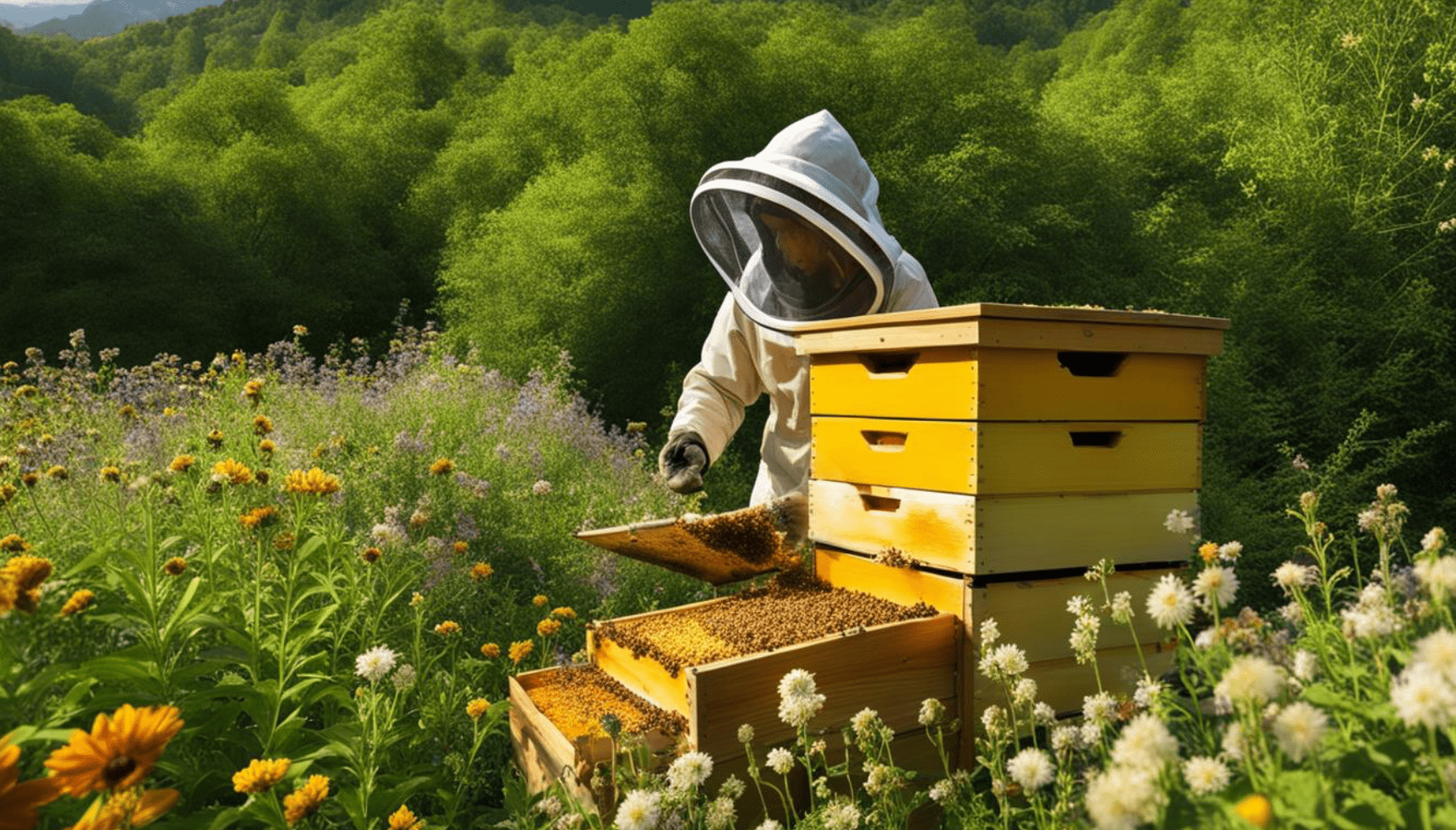
“Using honey frames in beekeeping provides numerous advantages for both beekeepers and bees.”
Incorporating honey frames into your beekeeping practices is a smart choice for beekeepers looking to enhance their honey production, hive health, and overall beekeeping experience. With a range of benefits available through the use of honey frames, it’s no wonder that they are a popular tool for modern beekeepers.
Honey Harvesting Made Easy with Honey Frames
In beekeeping, harvesting honey can be a time-consuming and messy process, but with honey frames, it can be simplified and efficient. Honey frames make the honey extraction process much easier, allowing beekeepers to collect honey directly from the frames rather than harvesting the entire hive.
Honey frames typically feature a wooden or plastic frame with a foundation of beeswax or plastic, designed to give bees a structure to build honeycomb on. The comb fills the frame, allowing the beekeeper to remove the frame and extract the honey without damaging the hive or disrupting the bees.
There are several techniques for removing honey from honey frames, including manual extraction, centrifugal force, and using heated knives or blowers to remove wax. Depending on the technique used, beekeepers can extract honey from honey frames quickly and easily, without damaging the frames or the hive.
Using honey frames for honey harvesting has several benefits for beekeepers. Not only does it simplify the process, but it also reduces the risk of damaging the hive and harming the bees. Additionally, honey frames allow beekeepers to harvest honey more frequently, leading to higher honey yields throughout the year.
A Comparison of Traditional and Honey Frame Honey Harvesting
| Traditional Honey Harvesting | Honey Frames |
|---|---|
| Requires removal of entire hive | Frames can be removed and replaced easily |
| Honeycomb is cut and spun to extract honey | Honey can be extracted directly from the frame |
| More time-consuming and messy process | Simplifies and streamlines the honey extraction process |
In conclusion, using honey frames for honey harvesting is a game-changer for beekeepers, simplifying the process and leading to higher yields. With a variety of extraction techniques available, beekeepers can choose the method that works best for them and their hives. Incorporating honey frames into your beekeeping practices can enhance your honey production and promote the overall health and sustainability of your operation.
Maintaining and Caring for Honey Frames
Proper maintenance and care of honey frames are essential for the longevity and efficacy of your beehives. By regularly inspecting and cleaning your frames, you can ensure the health and well-being of your bees and the quality of your honey production.
Inspecting Honey Frames
Regular inspections of your honey frames are necessary to identify any signs of damage or wear and tear. Check for cracks, splits, or warps in the frames or any signs of mold or disease. Be sure to remove any dead bees or debris that may have accumulated on the frames to prevent any blockages or impurities in the honey production.
Cleaning Honey Frames
Honey frames must be cleaned thoroughly to remove any excess wax or propolis that may have accumulated over time. You can use a hive tool or scraper to remove the debris gently. Be cautious not to damage the frames or remove too much wax as this may disrupt the honeycomb structure and reduce honey production.
After removing the debris, you can rinse the frames with water or a mild soap solution to remove any remaining impurities. Avoid using any harsh chemicals that can be harmful to your bees or the environment.
Storing Honey Frames
Proper storage of honey frames is necessary to prevent damage and deterioration. Ensure that the frames are kept in a dry and cool place away from direct sunlight or humidity. You can store the frames in a sealed container or a hive body to prevent any pests or insects from accessing them.
Replacing Honey Frames
Honey frames have a limited lifespan and must be replaced periodically to ensure optimal honey production. Wooden frames typically last for two to three years, while plastic frames have a longer lifespan of four to five years. Replace the frames if you notice any significant damage, wear and tear, or deterioration.
By maintaining and caring for your honey frames, you can ensure the health and well-being of your bees and the quality of your honey production. Proper maintenance and care are essential for sustainable beekeeping practices and the longevity of your apiary equipment.
Innovations and Advancements in Honey Frame Technology
The world of beekeeping has seen significant advancements in honey frame technology over the years. The newest innovations are designed to enhance beekeeping practices, making it easier and more efficient to manage beehives and extract honey. Let’s take a look at some of the latest developments in honey frame technology that are transforming beekeeping practices:
Self-Extracting Honey Frames
Self-extracting honey frames are an exciting development in honey frame technology. These frames eliminate the need for beekeepers to manually extract honey from the frames, saving time and effort. The process involves placing a self-extracting honey frame into a centrifuge, which then extracts honey from the frame without damaging it.
This innovative technology ensures that honey frames remain intact, which is crucial for maintaining hive health and productivity. Additionally, self-extracting honey frames allow beekeepers to harvest honey in large quantities, making the process more efficient and cost-effective.
Honey Frames with Integrated Sensors
Honey frames with integrated sensors are another exciting innovation in honey frame technology. These frames feature sensors that measure hive temperature, humidity, and other environmental factors. Beekeepers can use this data to monitor hive health and ensure optimal production conditions.
Integrated sensors also help beekeepers detect potential problems before they become serious. For example, if the hive temperature rises above a certain threshold, the beekeeper can take action to prevent the hive from overheating and harming the bees. Overall, honey frames with integrated sensors are a valuable tool for beekeepers who want to ensure the health and productivity of their hives.
Plastic Honey Frames
Plastic honey frames have become increasingly popular in recent years due to their durability and affordability. Unlike traditional wooden frames, plastic frames are easy to clean and sanitize, making them an excellent choice for beekeepers who want to maintain a high level of hygiene in their hives.
In addition to being easy to clean, plastic frames are also lighter than wooden frames, making them easier to handle and transport. They can also be reused multiple times, making them a cost-effective option for beekeepers. Overall, plastic honey frames are an excellent choice for beekeepers who want to streamline their beekeeping practices without sacrificing quality or productivity.
Conclusion
These are just a few of the many innovations and advancements in honey frame technology that are transforming the world of beekeeping. From self-extracting frames to frames with integrated sensors, these new technologies are making it easier and more efficient than ever to manage beehives and produce high-quality honey. By embracing these advancements, beekeepers can ensure the health and sustainability of their hives for years to come.
Honey Frames: A Sustainable Approach to Beekeeping
In recent years, there has been a growing awareness of the need for sustainable practices in beekeeping. Honey frames offer a sustainable approach to beekeeping that not only benefits beekeepers but also supports the health and well-being of bees.
Honey frames promote sustainable beekeeping practices in several ways. Firstly, they enhance honey production, allowing beekeepers to harvest honey without harming the bees or the hive. This ensures that the hive remains intact and healthy, promoting the bees’ longevity and productivity.
Secondly, honey frames offer a more efficient way of harvesting honey, reducing the amount of time and energy required for beekeepers to collect honey. This means that beekeepers can spend more time caring for their bees and less time on honey extraction.
Finally, honey frames contribute to the conservation of resources and support pollination efforts. By promoting healthy hives and improving honey production, honey frames aid in the pollination of plants, promoting biodiversity and conserving resources.
Sustainable Beekeeping Practices: A Global Concern
Sustainable beekeeping practices are an increasingly pressing global concern. Bees play a critical role in our ecosystem, pollinating crops that provide food for humans and other animals. However, bees face a range of threats, including disease, climate change, and habitat loss.
By adopting sustainable beekeeping practices, we can help protect bees and ensure their continued survival. Honey frames offer a sustainable approach to beekeeping that can support the health and well-being of bees while also promoting the productivity and profitability of beekeeping operations.
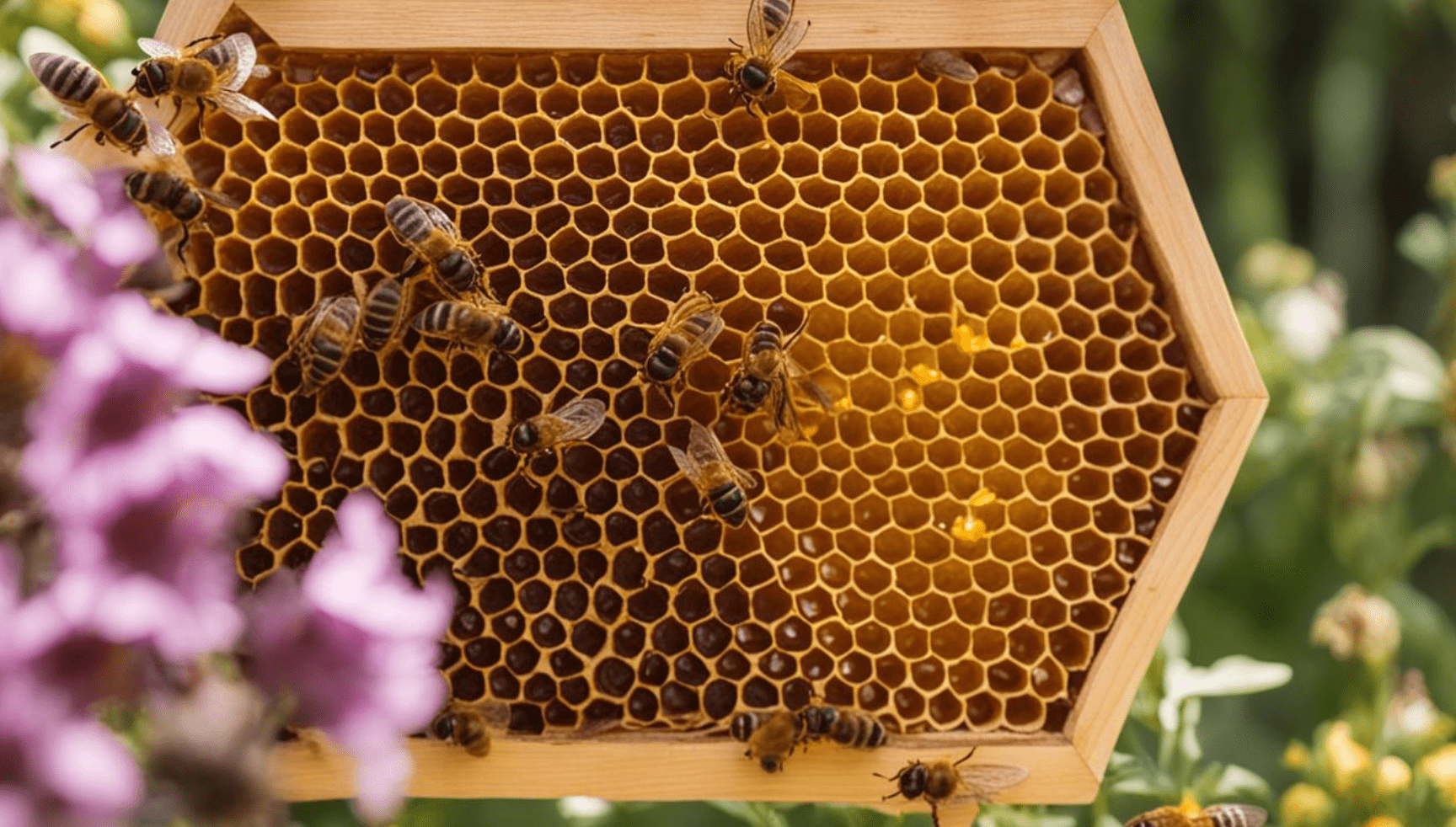
“Sustainable beekeeping is essential for the protection of our ecosystem. Honey frames offer a sustainable approach to beekeeping that can support the health and well-being of bees while also promoting the productivity and profitability of beekeeping operations.”
In conclusion, honey frames offer a sustainable approach to beekeeping that can benefit both beekeepers and bees. By promoting healthy hives, improving honey production, and supporting pollination efforts, honey frames contribute to sustainable beekeeping practices and help protect bees from threats such as disease, climate change, and habitat loss.
Conclusion
In conclusion, honey frames are an essential tool in modern beekeeping practices, offering numerous benefits for both beekeepers and bees. By incorporating honey frames into your hive setup, you can boost honey production, simplify honey extraction, and promote the overall health and sustainability of your beekeeping operation.
With a variety of honey frames available on the market, beekeepers can choose the best type of frames to suit their unique beekeeping needs. Whether it’s wooden frames for a traditional look or plastic frames for a more durable option, there’s a type of honey frame for everyone.
Maintaining Honey Frames is Key
It’s important to note that proper maintenance and care of honey frames is crucial to their longevity and the health of your beehives. Regularly inspect your honey frames for damage or wear, and replace any frames that are no longer structurally sound. Additionally, cleaning your honey frames between uses can prevent the buildup of harmful bacteria and parasites.
Advancements in Honey Frame Technology
As with any technology, honey frames are constantly evolving with advancements and innovations. Beekeepers can stay up to date with the latest honey frame technology, such as self-extracting frames and frames with integrated sensors. These advancements are designed to further enhance beekeeping practices and promote sustainability.
Overall, honey frames are a sustainable and efficient approach to beekeeping that can benefit not only beekeepers but also the bees themselves. Embrace the world of honey frames and elevate your beekeeping journey to new heights.
FAQ
What are honey frames and why are they important in beekeeping?
Honey frames are rectangular wooden or plastic frames that provide a foundation for honeycomb formation in beehives. They are crucial for maintaining the structural integrity of the hive and supporting honey production.
What are the different types of honey frames available?
There are various types of honey frames available in the market, including wooden frames and plastic frames. Each type has its own unique features and benefits, allowing beekeepers to choose the most suitable option for their needs.
How do honey frames contribute to honey production?
Honey frames play a significant role in honey production. They provide a structure for bees to build honeycomb cells and store honey, making the extraction process easier and more efficient for beekeepers.
How do honey frames simplify the honey harvesting process?
Honey frames simplify the honey harvesting process by allowing beekeepers to extract honey directly from the frames. This eliminates the need to disturb the entire hive, making the extraction smoother and less disruptive for the bees.
How should honey frames be maintained and cared for?
Proper maintenance and care are important for the longevity of honey frames. Beekeepers should regularly inspect and clean the frames, remove any excess propolis or wax, and ensure they are stored in a dry and protected environment.
What are the innovations in honey frame technology?
Honey frame technology has seen advancements such as self-extracting frames and frames with integrated sensors. These innovations aim to enhance beekeeping practices by making honey extraction more efficient and providing valuable data for hive management.
How do honey frames contribute to sustainable beekeeping?
Honey frames promote sustainable beekeeping practices by supporting colony health, conserving resources, and facilitating pollination efforts. They enable beekeepers to optimize honey production while ensuring the overall well-being of their bees and the environment.

